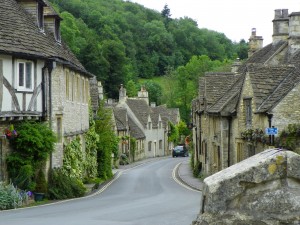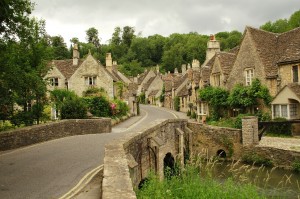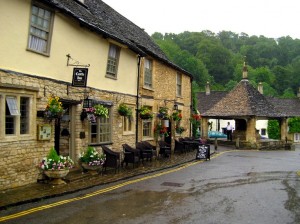Seniors Enjoy Prettiest Village In England
Castle Combe, a village on the southern-most edge of the Cotswolds, is approximately 12 miles from the Georgian city of Bath. Senior travelers also enjoy the nearby sites of historical interest, Stonehenge and the Wiltshire White Horses.
Castle Combe (pop. 350) has been called ‘The Prettiest Village in England’. The small street leading from the Market Cross down to the By Brook is as picturesque today as it has ever been.
Little has changed in Castle Combe in the last 400 years – no houses have been built since 1617, and most of the original medieval buildings still exist beneath layered facades. Senior visitors will see quaint stone cottages, you will not see TV aerials or street lights.
Seniors, Artists, Filmmakers Drawn to the Village
Today there are more artists than autos in Castle Combe, a favorite spot for painters to set up their easels. This village, in some ways, is a victim of its own reputation, for visitors can on occasion, outnumber the residents.
Originally a British hill fort became occupied by the Romans, followed by the Normans, who built the fort into a Castle.
By the Middle Ages the village in the valley below had become an important center for the wool industry. The spinsters and weavers lived in the cottages (hence names such as “Weaver’s House”) and the river, still known as By Brook, provided the power to run the mills.
In more recent times the village has played host to many filming activities, most memorable of which was the 1966 film of Doctor Doolittle, starring Rex Harrison and Anthony Newley. Recently, Castle Combe was the film location for Stephen Spielberg’s ‘War Horse’.
Seniors Find Hidden Gem
Set in 365 acres of Cotswold countryside, Castle Combe is a hidden gem that has been welcoming senior visitors for at least a century. The village boasts a racetrack that opened in 1950 and in its heyday attracted star names such as the famed Stirling Moss.
If you have driven through England you have passed through dozens of highly attractive small villages. Now place this one on your “must see” list… it stands out among all the others. The village is nestled in a wooded Cotswold valley, with the ambling Bybrook river flowing through it.
Castle Combe is a truly delightful example of a traditional English village. The local Village Museum contains a summary of the village history. The Town Bridge at the end of the village street was originally a timber construction until it was replaced by stonework in the 18th century.
The Roman Bridge, a one-sided bridge at the far end of the village, is often referred to simply as the ‘Roman Bridge’.
According to legend the ghost of a roman centurion has been seen standing guard, so look for him.
By the way, there are two pubs in town for sampling some local brews. Enjoy your visit to Castle Combe. -jeb





